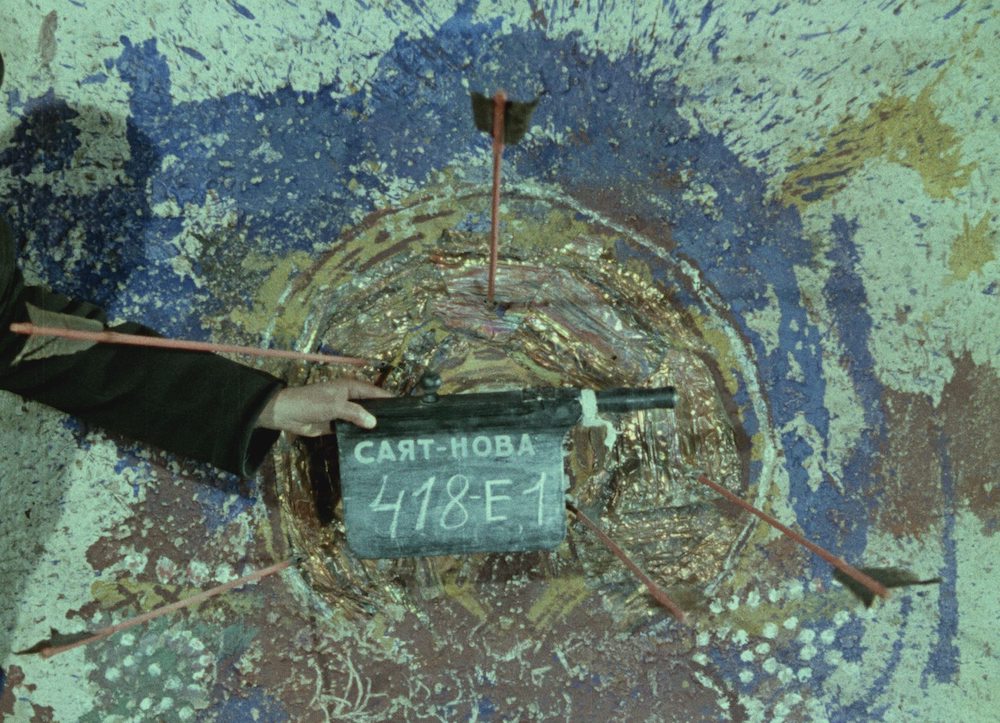At this year’s International Film Festival Rotterdam, Port talked to Daniel Bird about never before seen outtakes from Parajanov’s poetic masterpiece – The Colour of Pomegranates
Part film, photograph, painting and poetry, The Colour of Pomegranates is a vibrant hieroglyph come to life. Told in tableaux chapters, the film recounts the inner life of the 18th-century Armenian poet and singer Sayat Nova using coded visual metaphor, ritualistic, stylised movement and rich choral soundscape. Simultaneously sensual, hypnotic and abstract, it remains a testament to the fact there is an alternate way to create and experience cinema.
The pure magic of the film, released by the Soviet Union in 1969, is matched only by the story of its production and its director, Sergei Parajanov. Shot in four countries amid ancient, holy ruins, the dreamlike celebration of Sayat Nova was deemed incomprehensible at the time of its release. Imprisoned shortly afterwards for a collection of dubious crimes, Parajanov and his visual-sonic tapestry has fluctuated between obscurity and international celebration over the past four decades. Since its official release to Western audiences in 1982, its stature and notoriety continues to grow. When Martin Scorsese first introduced The Film Foundation’s World Cinema Project and Cineteca di Bologna’s restored version, he stated that the audience was about to see something “pretty much unlike anything in cinema history.”.
Port attended the 49th International Film Festival Rotterdam for its Art Directions programme to see The Temple of Cinema, never before seen outtakes projected within a cross of monitors, set within an incense filled church. Made possible by the Hamo Bek-Nazarov Project, a collaboration between the National Cinema Centre of Armenia and Fixafilm, we spoke to Project director Daniel Bird about the ethics of outtakes, creating national identity through cinema and Parajanov’s legacy.
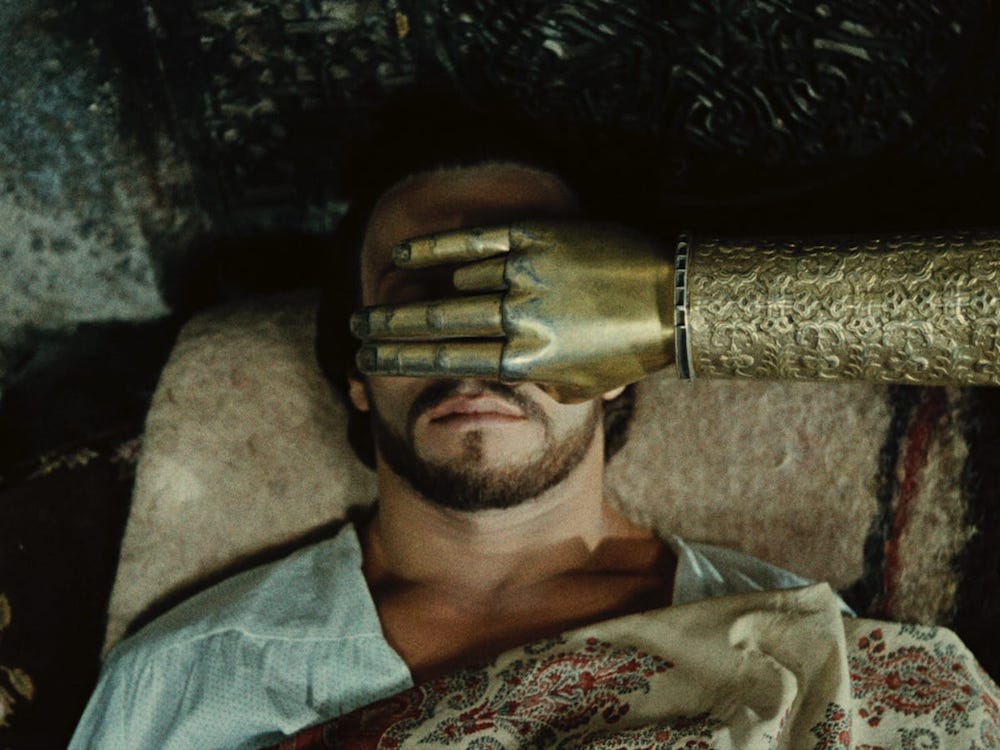
What makes Pomegranates such a revolutionary format / medium?
Parajanov was asked to make a film about Sayat Nova, the national poet of Armenia and a symbol of the Caucasus. Parajanov was an Armenian born in Tbilisi, so in making a film about Sayat Nova, he was also making a film about himself. He expressed an interest in making a film about the inner life of the poet, not a conventional biopic. The state-run studio, Armenfilm, actually embraced this. Parajanov incorporated the great tradition of Armenian miniatures based on the life of the poet. He tried to translate poetry into cinema in the way that we translate English into French, developing a visual and sonic analogue.
What will the outtakes reveal?
That there was a lot of experimentation in terms of finding a look, feel and tone. When you look at the outtakes you can see Parajanov trying lots of visual ideas – different angles and a wider lens – which he then decides to omit during the editing. The distinctive look which we associate with the film was found during the shooting. There’s also a lot of improvisation in the outtakes. One of my favourite scenes is referred to as ‘Sayat Nova’s wet dream’ and it involves Sayat Nova in a monastery at night, milking a llama. You see the milk going into a goblet and he parades the cup around a monastery as is if it’s some sort of holy relic. Meanwhile his beloved is dressed in black and behind her is a sheet of glass. He approaches from behind and throws the cup, it splashes and then rolls down behind her. She then pulls away a kind of a chest piece, with a white Rorschach ink print. It’s completely vulgar, but fantastic.
How did you go about selecting the screening space?
It’s obviously reverential putting the outtakes in a church, but we’re not putting it on a pedestal. It’s not a prerequisite to have a firm grasp on Armenian or Soviet history, anybody can go into that space and appreciate the film on a sensual level. We have twelve hours of material and only exhibited three, so roughly a quarter, and decided to leave the spliced reels as they were. They’re constantly generating random associations between the monitors, so it’s like a self-editing film. They talk amongst each other. Parajanov loved the theatre of religion, the incense, the costumes, the rituals, but he wasn’t a religious person. Jean-Luc Godard once said that “In the temple of cinema, there are images, light, and reality. Parajanov was the master of that temple.” That’s where our title comes from, we wanted to create a secular space where god was cinema itself.
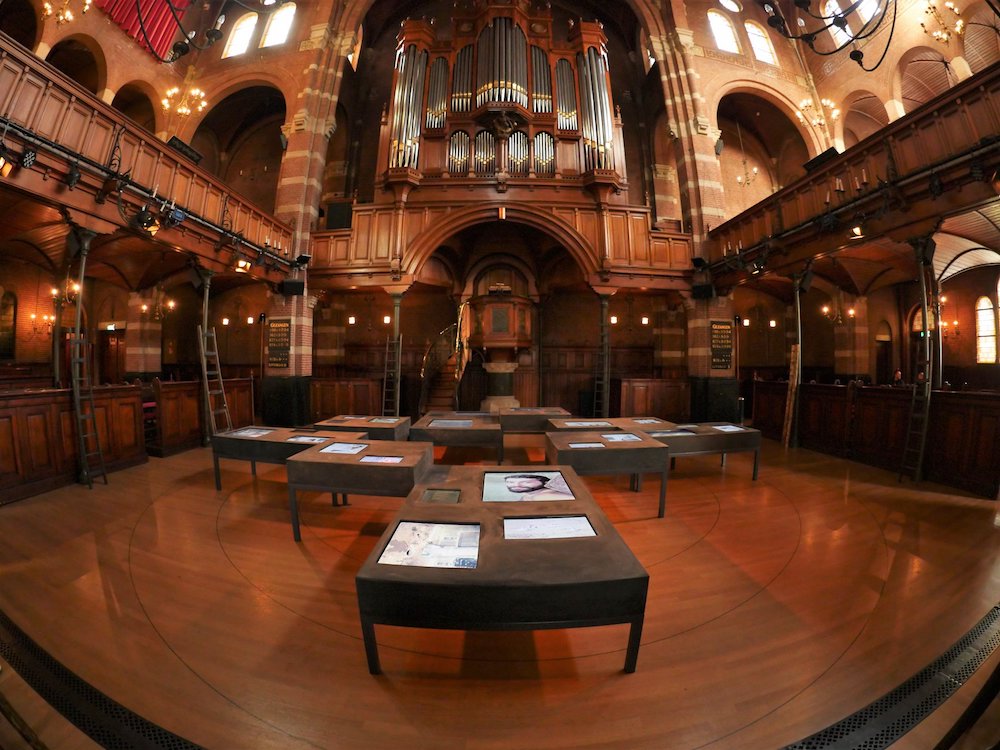
Why was the film challenging to USSR authorities at its time of release?
In the 1970s, Parajanov was imprisoned ostensibly for spreading venereal diseases, inciting suicide, dealing in foreign currency and stealing religious icons – which just sounds like the ultimate John Waters villain. Those were the official reasons he was sent to prison, but everybody assumes that it was to do with his homosexuality. He wasn’t imprisoned because of the film, he was imprisoned because of himself. The main reason it was recut was that it was deemed incomprehensible. The main concern was, ‘who is this film for? Why are we making films for Western intellectuals? What about the man on the street – is he going to understand?’. When I spoke to Stepan Andranikyan, the production designer, he said when they screened the film the people in the village had no problem understanding, they got it entirely. Likewise with the intellectuals. The problem was the middle classes, who believed ‘no one will understand this’ – quite a condescending attitude. Frankly speaking, it’s is no different to the mentality of most institutions in the UK when commissioning films. Everything is about comprehension, or accessibility. So at the time of its release, the assumption was that it had been butchered by bureaucrats. That’s not true. There was an Avant Garde filmmaker called Sergej Yutkevich who suggested sharpening the narrative and simplifying it by putting it in chapters. So that was the ‘bastardized version’ that was most widely seen. It wasn’t until 1990 after the collapse of the Soviet Union that the domestic cut, Parajanov’s cut, started to go into circulation. In my opinion, there’s no definitive version of The Colour of Pomegranates.
We have a very black and white view of Soviet cinema which I’m trying to dispel – there was room for experimentation. It was the biggest, most expensive film for Armenfilm at the time, shot in four countries and in production for over two years. Can you imagine the BFI agreeing to a biography about Shakespeare’s thought process that uses a visual language to capture what makes his language so interesting? The closest we have to that is with people like Derek Jarman, but we don’t make films like that now. It’s easy to be dismissive of Soviet filmmaking conditions, but there was an openness.
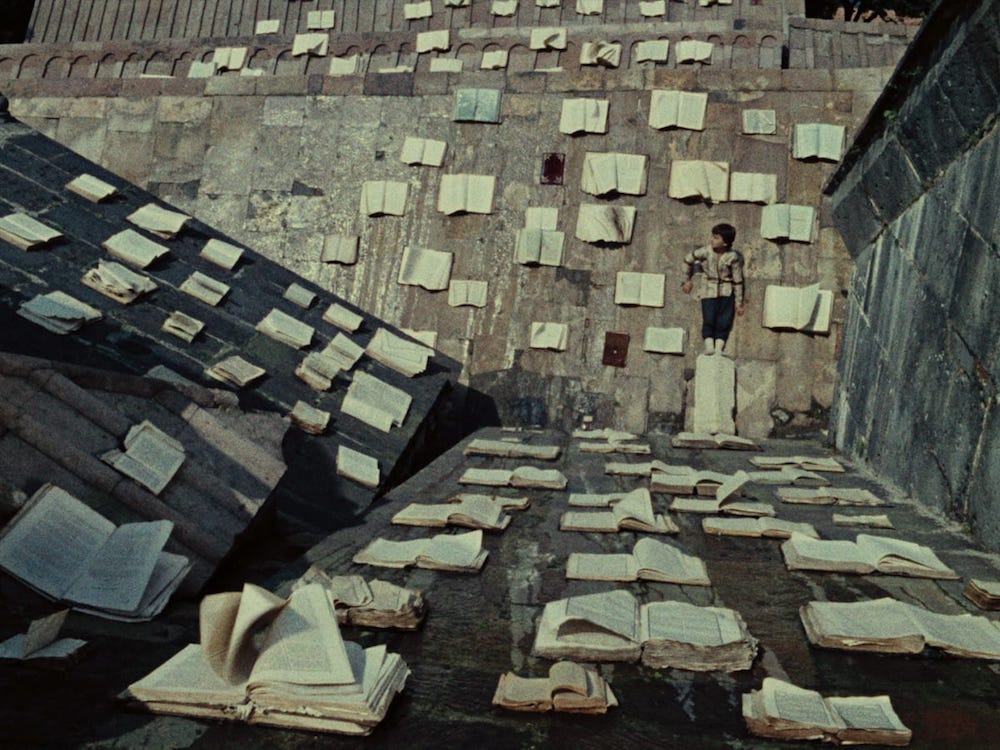
What is the films cultural significance?
There’s a sequence in the film which is very important – a line of poetry delivered in three languages, Armenian, Georgian and Ottoman-Turkish. That is the triple identity of Sayat Nova. When I first saw the film in the 90s, it was a Soviet film. Then over time it’s been reclaimed as Armenian and as Georgian. These formerly oppressed nations are developing a national identity through cinema. Armenia and Azerbaijan have been at de facto war with each other since the late 80s, but cinema has the capacity to transcend national boundaries. There’s almost a post-colonial dialogue going on between these states about repatriation of elements. In this particular moment, politically, we need a cinema of migrants and immigrants, shifting away from rigid, closed national identities.
What were the ethical and artistic considerations for the show?
We had to contend with the obvious ethical issue that they are outtakes – they were never meant for public consumption. There was a debate about whether or not they should be shown, before being given blessing by the Parajanov Museum and close friends of the director. They lie somewhere between history and a creative presentation. To what degree do we impose our artistic identities or not? I’ve tried not to impose my own ego on this and it’s been a really interesting exercise presenting the outtakes as an open book, not editing the material.
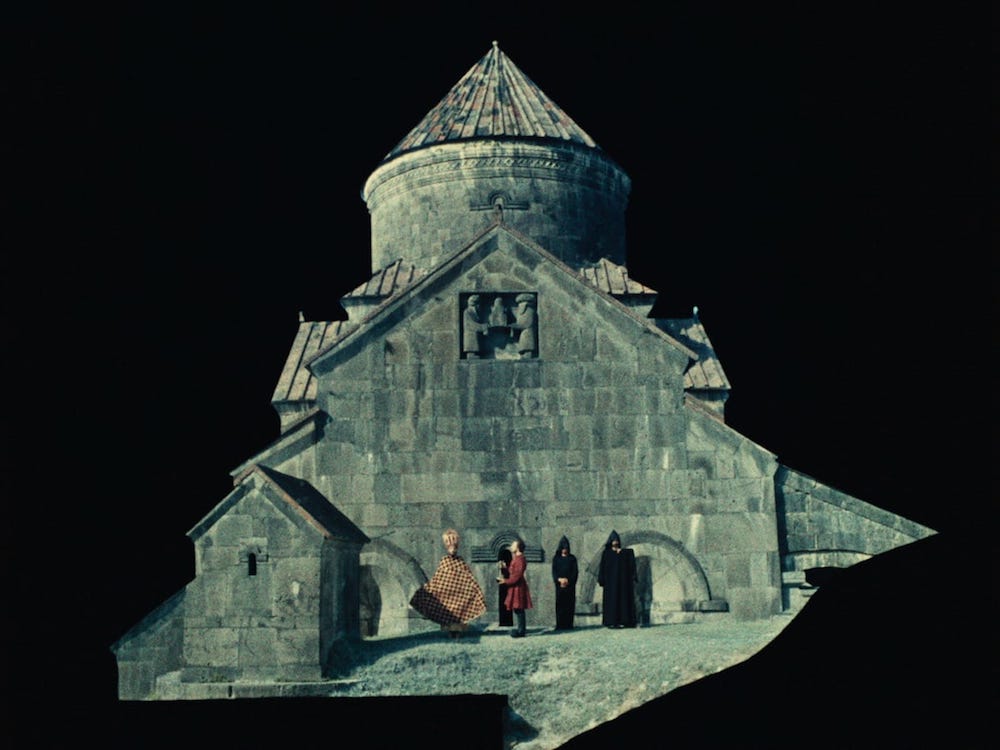
At the close of the film, Sayat says: “Whether I’m living or dead / My song will awaken the crowd / I’ll depart but from that day / A piece of me will stay in the world.” Were he alive today, what would Parajanov say about the renaissance and revival of his film?
It’s impossible to answer. You just have to make a judgment call in whose interest this revival is. Is it in my interest, is it in Parajanov’s? Or is it in the interest of interest of filmmakers and most importantly, viewers? There’s a triptych program at Rotterdam this year made up of some other restored Parajanov films and one from Francesca Levi – it’s 45 minutes long. This is less than one episode of a TV show on Netflix. I cannot say how many ideas, how much humour, how much melancholy, how much imagination is in that 45 minutes. Parajanov had a mentality that you can be profoundly clever, vulgar, sad and humorous at the same time. You can be all of these – you can be alive. These films are like that last line by Sayat Nova, fragments of Parajanov. Having them in a place like the International Rotterdam Film Festival with lots of young emerging filmmakers – if it in some way triggers an idea that there is a different way of doing something and that filters into the films or TV we watch – that can only be a good thing. We need someone like Parajanov to remind us that a different filmmaking is possible.


